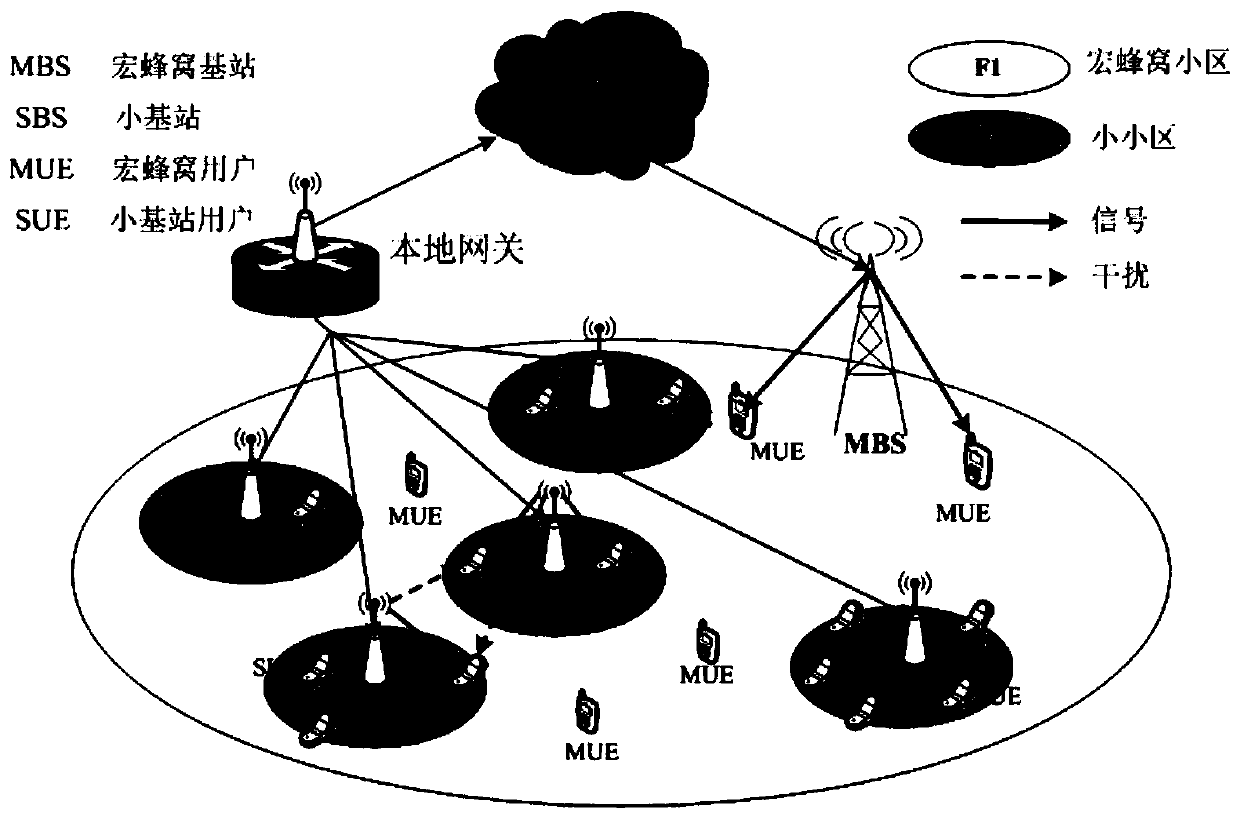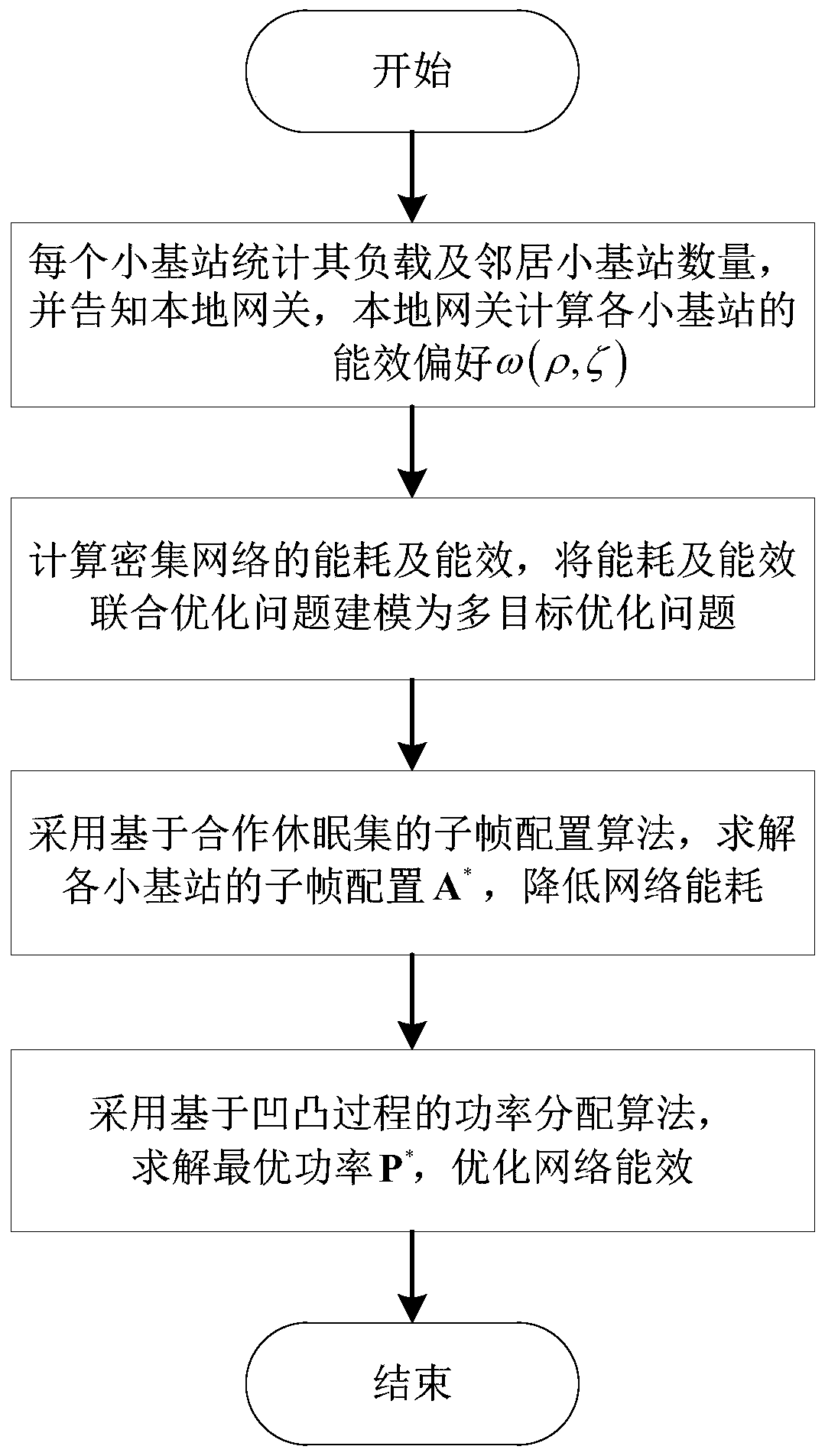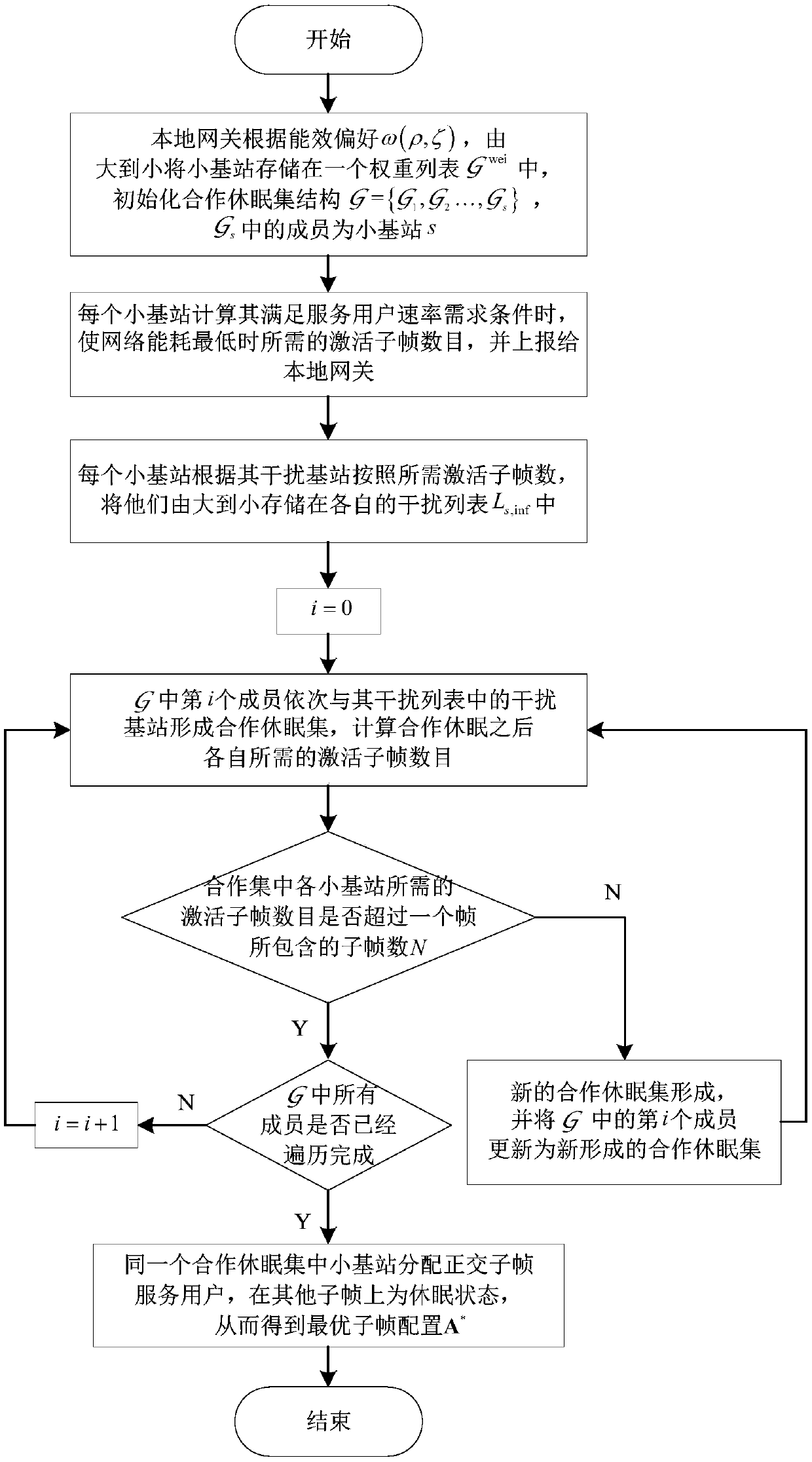Dense network energy consumption and energy efficiency joint optimization method by considering cell difference
A dense network and joint optimization technology, applied in the field of network optimization, can solve problems such as ignoring the differences of small base stations, and achieve the effect of reducing network energy consumption and optimizing network energy efficiency
- Summary
- Abstract
- Description
- Claims
- Application Information
AI Technical Summary
Problems solved by technology
Method used
Image
Examples
Embodiment Construction
[0085] In order to make the object, technical solution and advantages of the present invention clearer, the present invention will be described in further detail below in conjunction with the accompanying drawings.
[0086] This embodiment is applicable to a scenario where a macro cell and a dense network are deployed at different frequencies. In this scenario, macro cells are deployed on frequency F1, and a dense network composed of a large number of small cells is deployed on frequency F2. Each small base station is deployed in a frequency reuse manner with a reuse factor of 1. The small base station is connected to the core network through a local gateway. Users in the network select the serving base station through the maximum reference signal received power (RSRP). The scenario of this embodiment is as figure 1 shown.
[0087] In such a network, the number of small base stations is huge, resulting in huge energy consumption of the network, and co-frequency deployment w...
PUM
 Login to View More
Login to View More Abstract
Description
Claims
Application Information
 Login to View More
Login to View More - R&D
- Intellectual Property
- Life Sciences
- Materials
- Tech Scout
- Unparalleled Data Quality
- Higher Quality Content
- 60% Fewer Hallucinations
Browse by: Latest US Patents, China's latest patents, Technical Efficacy Thesaurus, Application Domain, Technology Topic, Popular Technical Reports.
© 2025 PatSnap. All rights reserved.Legal|Privacy policy|Modern Slavery Act Transparency Statement|Sitemap|About US| Contact US: help@patsnap.com



